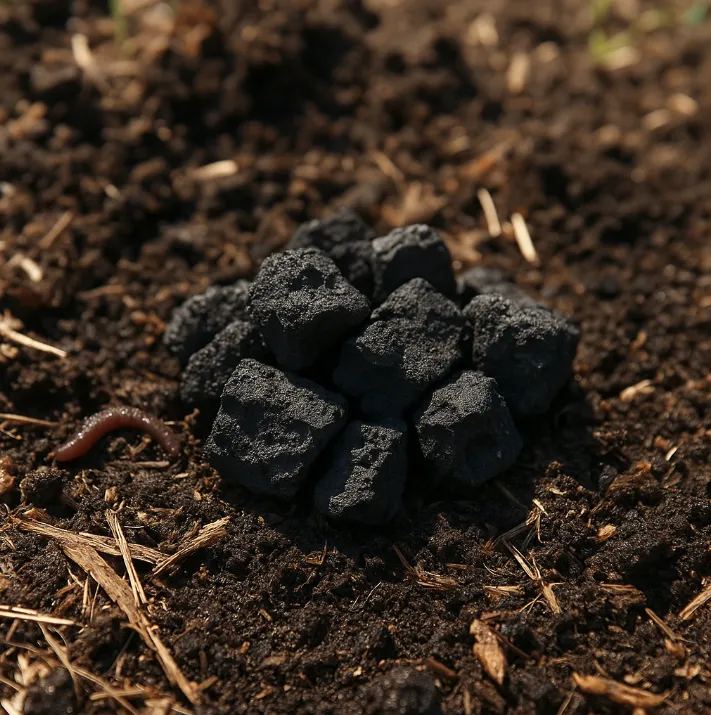
Biochar: What It Is and How to Use It
Biochar isn’t a new hipster barbecue joint—it’s a secret soil superpower. Learn what it is, why it matters, and how to use it without setting off your smoke alarm.
So… What Exactly Is Biochar?
Imagine charcoal—but with a purpose. Biochar is basically plant matter (like wood chips, crop waste, or even nutshells) that’s been burned without oxygen until it turns into a stable, carbon-rich material that looks like crushed lava rock.
But here’s the kicker: it’s not just for show. This stuff doesn’t rot, break down, or vanish in a season. It sticks around—sometimes for centuries—improving your soil and storing carbon like it’s hoarding secrets.
Why Should You Care? (A Short List of Superpowers)
• Boosts Soil Health:
Biochar creates microscopic pockets in the soil—little Airbnb rooms for beneficial microbes.
• Retains Water:
Think of it as a sponge that doesn’t melt. Great for sandy or thirsty soils.
• Reduces Fertilizer Needs:
It helps keep nutrients where roots can reach them.
• Lowers Soil Acidity:
Like lime, but cooler.
• Locks In Carbon:
Good for your plants and the planet.
Pro tip: At Clemson Tea Farm, we’ve noticed biochar brings life back to tired soils—especially around our orchard zones and tea plantings. Our chickens may not know what it is, but the earthworms sure do.
How to Use It Without Looking Like You Just Burned the Garden
Don’t Use It “Raw”
Fresh biochar can actually pull nutrients from the soil until it’s been “charged” or pre-loaded with goodness. You’ve got two good options:
• Soak It in Compost Tea
• Mix with Finished Compost
• Add Worm Castings
Let it sit and absorb those nutrients before adding to your soil.
How Much Is Too Much?
More is not always better. Start with:
• 5–10% by volume in garden beds
• A thin ½ inch layer worked into the topsoil for existing beds
• Up to 10% biochar in your compost pile to supercharge decomposition
Where to Use It
• Veggie beds that dry out too fast
• Clay soils that need structure
• Containers with tired potting mix
• Orchards or perennial zones that benefit from long-term soil improvement
Add biochar to your nursery bed this spring. By fall, see if you have double the earthworm count and visibly darker, fluffier soil.
But… Isn’t This a Bit “New Age”?
Not at all. Indigenous Amazonian farmers were using biochar thousands of years ago to create terra preta—rich, dark, high-yielding soil that still blows scientists’ minds today. So, no, it’s not a trend. It’s a comeback.
Wrap-Up: Char Your Way to Better Soil
Biochar isn’t a silver bullet, but it is a soil MVP—improving fertility, boosting resilience, and making your garden a little more climate-savvy. Whether you buy it, make it, or inherit it from your friend’s accidental backyard science experiment, it’s worth putting to use.
Just don’t eat it. Or name your dog after it. (Actually… Biochar would make a great chicken name.)
Want to bring more farm-to-cup wellness into your life?
Join our newsletter for seasonal tea tips, health-forward recipes, and behind-the-scenes farm stories.
Or get on the waiting list for our small-batch tea harvest at Clemson Tea Farm—where every leaf tells a story.
Wanna Geek Out?
© 2025 Clemson Tea Farm. All rights reserved.
